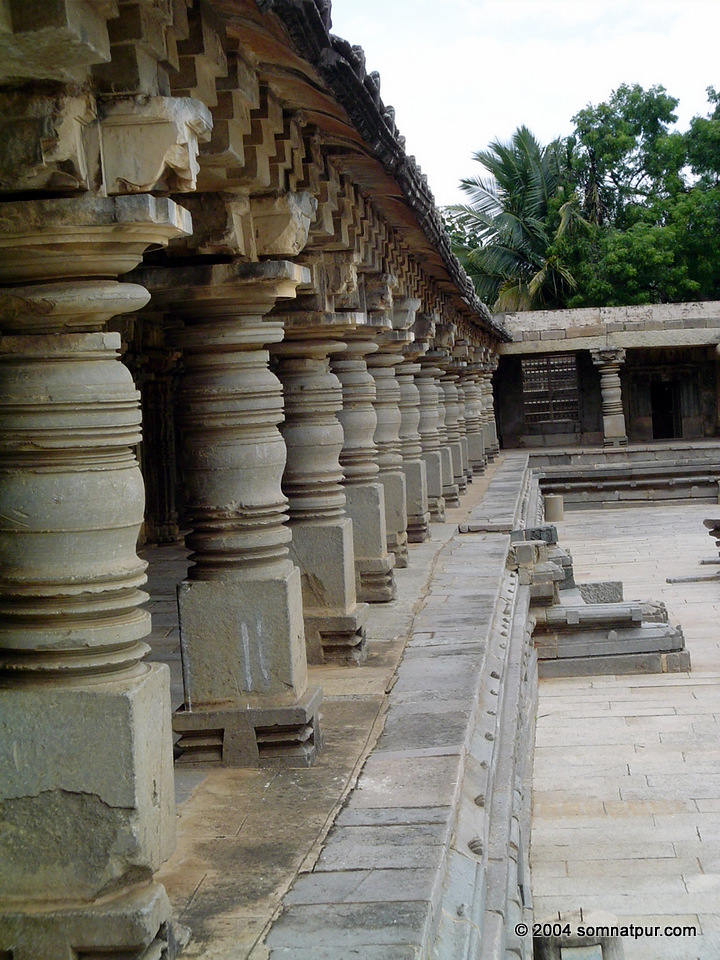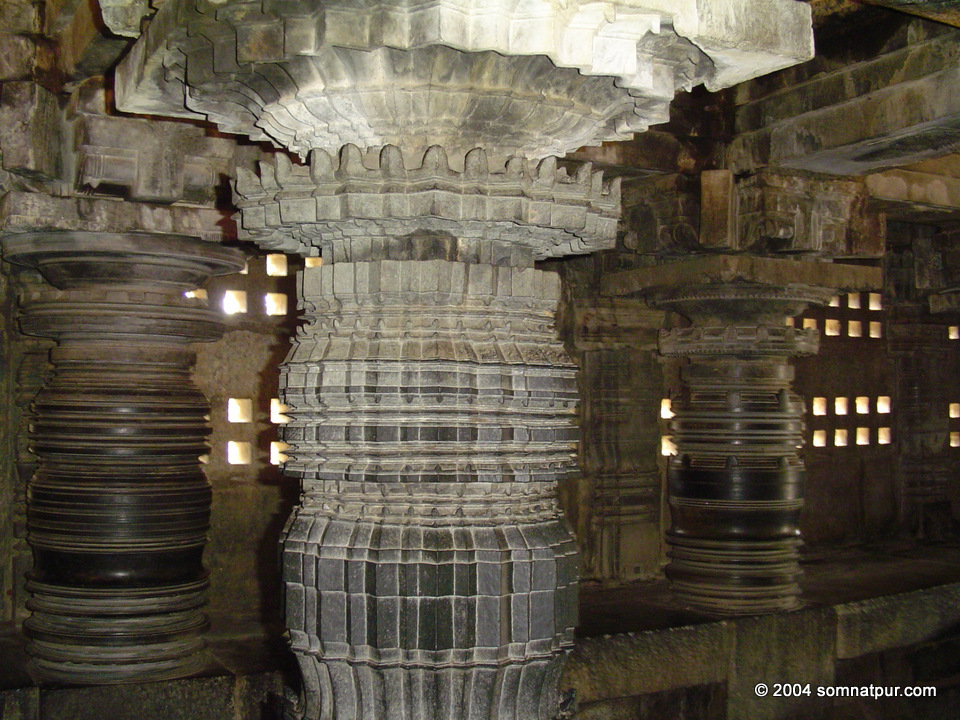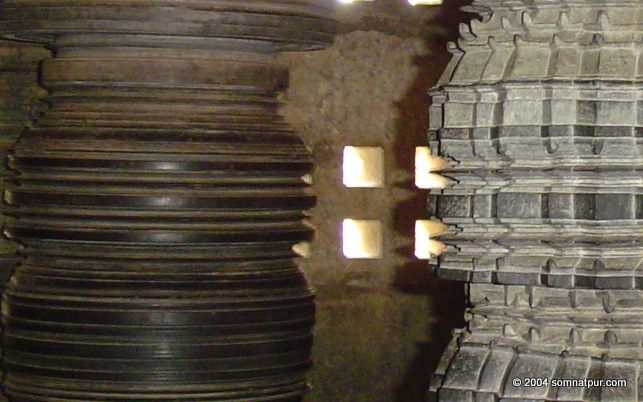Pillars

Pillars inside the Chennkeshava temple at Somnathpur
Pillars inside the Chennkeshava temple at Somnathpur
T
he massive lathe turned soapstone pillars are typical of Hoysala architectural style.There lathe-turned pillars are one characteristic feature that adds to the uniqueness of the Hoysala style architecture.
The pillars are cylindrical in shape with the possible exception of the cubical capital and the base sections. The ring like groves all along the length, except in the lower portion that appears like a bell.
Unlike other structural elements of the temple which were manually executed, the Hoysalas employed some kind of 'mechanization' in making these pillars.
There freshly quarried soapstone , cut & finished about the size of the final pillar is the rawmaterial. This is then mounted on a wooden swivel, like a potter's wheel, but much more stronger to hold the pillar.
The pillar is then rotated along the vertical axis. A narrow chisel is then held close to the surface, resulting in a chipping action. Take a close look at these pillars, you can see the chisel marks.
Though the stone now feels very hard, the freshly quarried soapstone (hence the name), is quite soft to work with.
In fact this technique was used by their predecessor, the Chalukyas. But Hoysalas where known for their obsession for the details, and dexterousness in execution. While the pillars of Chalukyan temples are bold, the Hoysalas added the element of intricacy to it.
You'll see these pillars on the porch to the Kesava temple complex, numerous ones forming a row along the along the colonnade and also inside the temple.
The ones inside the temple are somewhat special with additional decorations. Those lathe-turned pillars are further executed with fluted designs along the length, a Hoysala ingenuity.
Also you'll see the pillars inside looks polished compared to the ones outside.

Colonnade with Lathe-turned pillars at Somnathpur
Colonnade with Lathe-turned pillars at Somnathpur

Carved pillar with boldly executed capital inside the Chennakeshava temple of Somnathpur
Carved pillar inside the Chennakeshava temple of Somnathpur

Somnathpur
The left one is a simple lathe made pillar while the right one is further with intricate patterns carved on the lathe made features.
